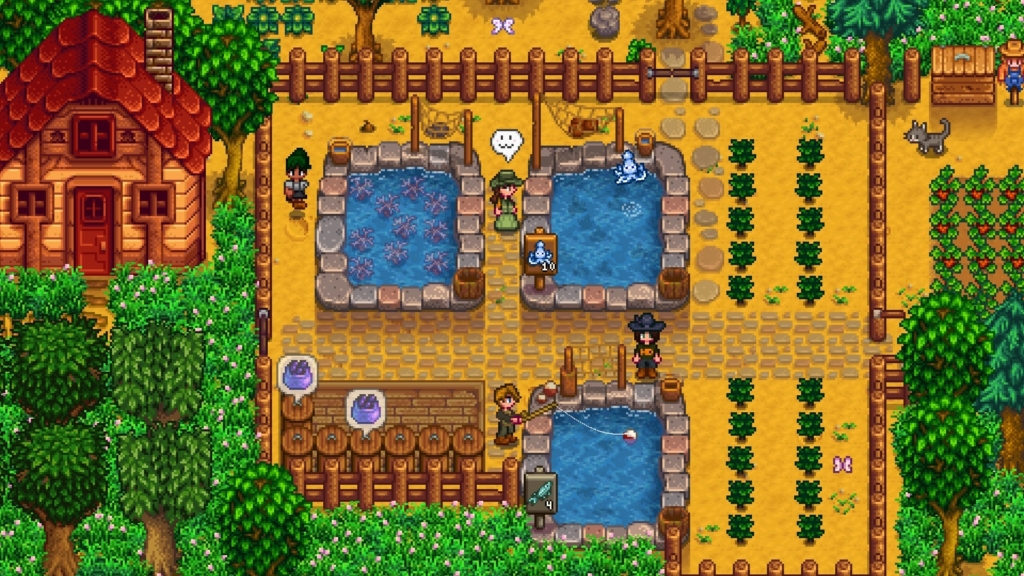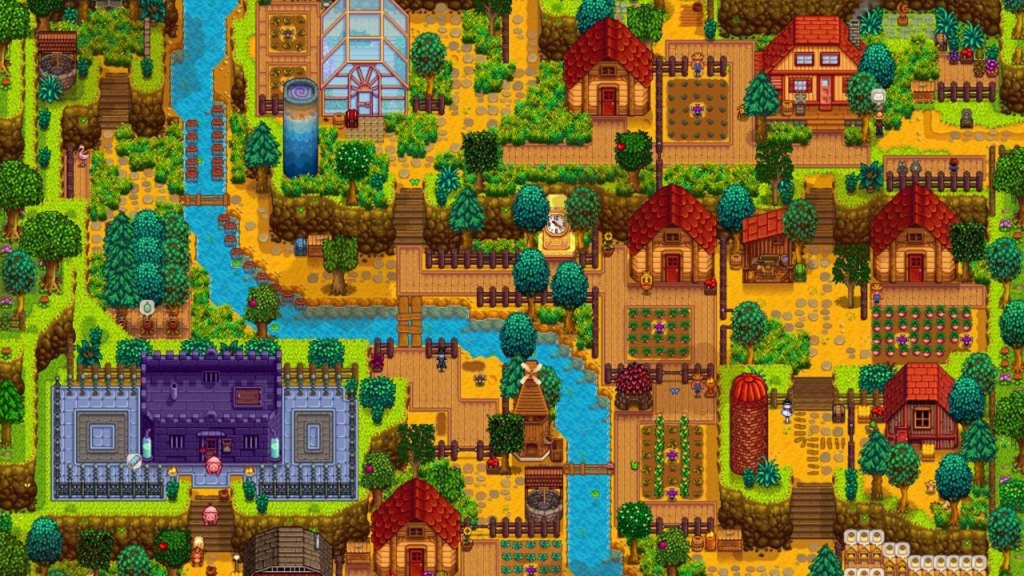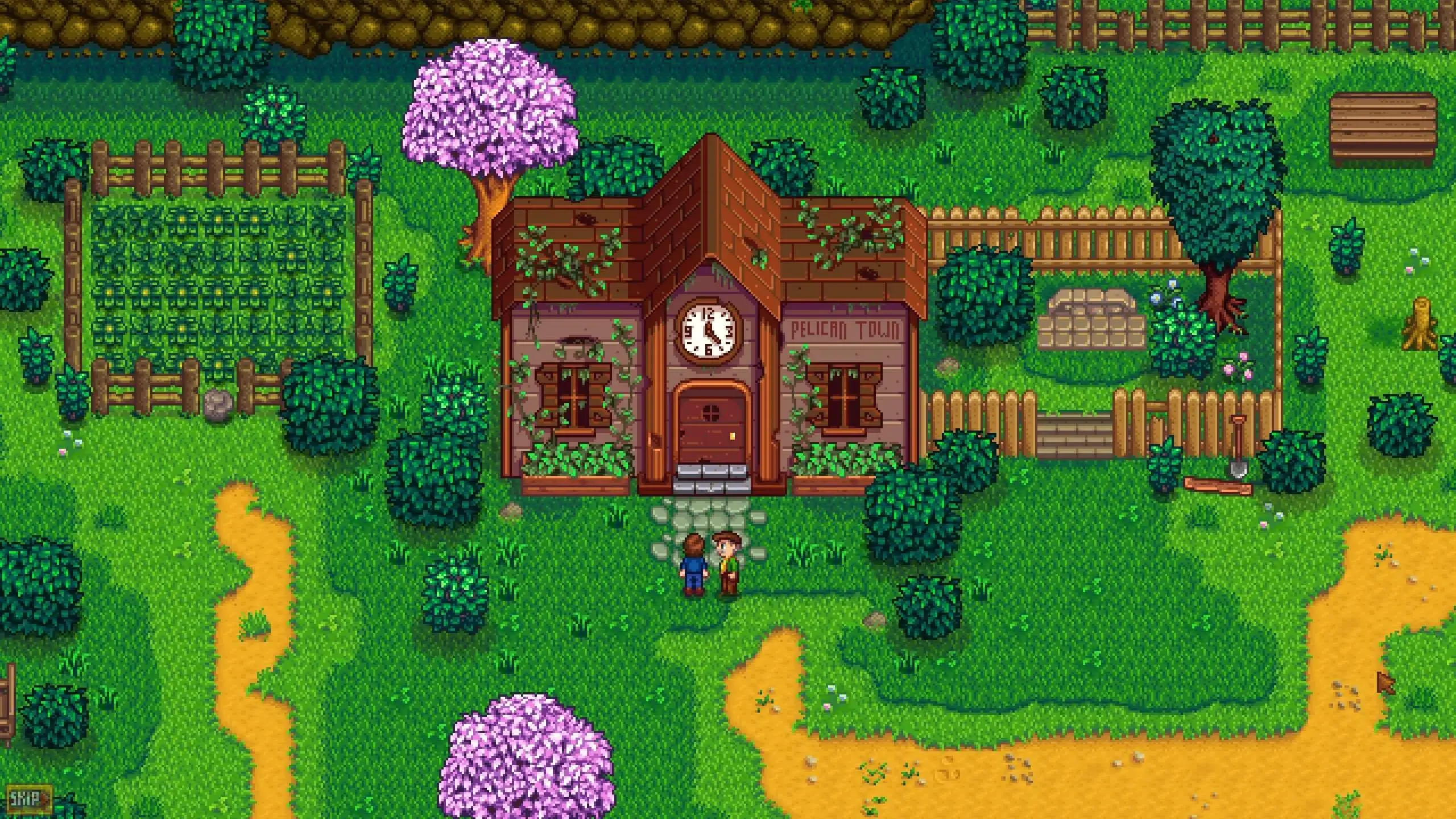Stardew Valley Review: Look Out, Animal Crossing
-
Multiplayer Co-op with a twist
-
Perfect for casual or hardcore simulation RPG fans
-
Life in Stardew Valley is all about the grind
If you think Animal Crossing New Horizons is a cute islander simulation game to play on rainy days, then Stardew Valley is an adorable farming life role-play game that you’ll lose hours to without noticing. This game came from Eric Barone (AKA ConcernedApe), and I noticed its huge rise to popularity at the end of 2020.
Considering Stardew Valley has sold over 10 million copies, it might be surprising to know it was released for major consoles back in 2018. Stardew Valley seems to be following suit with a few other titles, though, like Red Dead Redemption 2 (2018) and Uncharted 4 (2016). These games were released years ago, but they’re still ranking as the most popular titles in 2021, much like Stardew Valley.
Well, I played this unsuspecting title on the Nintendo Switch Lite, and never looked back.
The premise is simple. You tend to your crops, cultivate your land, raise your animals, and interact with your fellow villagers. A bonus aspect is wooing your chosen romantic interest, which adds a slightly dramatic tone to the game overall, though I wouldn’t at all call this a romantic game. Stardew Valley is hard work. It’s manual labour, meticulous timing of your tasks, and planning out your daily activities so you don’t run out of time or energy.
In a nutshell, this is Animal Crossing on steroids. The stakes are higher because you can actually fail at your daily tasks, and your daily actions affect the next day’s activities and progress. If you don’t water your crops, they’ll die. If you don’t give water to your dog… actually, no, the dog is ok, thankfully. Just don’t ask me to dog sit anytime soon.
There’s something interesting at the heart of Stardew Valley, and it’s the reason why this small-time villager simulator has increased in popularity so quickly.
The Story of Stardew Valley is Yours
The story begins as soon as the game opens. A short, emotional conversation with your dying grandfather lets you know you’ll be inheriting his small farm in a peaceful village, far from your current corporate job. This opening alone is what I believe has hooked Stardew Valley the following it has. It’s a familiar story for many people in the UK now, swapping their professional daily jobs for honest work-from-home hustles. This is the essence of Stardew Valley.

Something I loved about the game was how it twists the corporation you left as the big villain of the story. This rural, lively town of friendly villagers is under the grip of the Joja Mart corporation. Thus, there are a few parts of the village that don’t work as they should. You take on the hero’s role in small ways, helping to rebuild the village and its resources, quite literally, from the ground up. In the beginning, I was given the choice of supporting Joja Mart or rebuilding the community centre, and this is where the game finds its main story arc, showing you that your choices are free and have consequences.
I won’t be coy; the main narrative of this game will involve repetitive tasks and sometimes tedious waiting periods to see the payoff for your hard work. I felt my character’s motivation to improve the village my grandfather loved, and it makes the grind feel more purposeful overall. If it weren’t for the general background that the game sets up initially, I don’t think I would have kept playing past the first 10 hours, but it felt like it was my story to finish.
From the macro, we come to the micro, right when my character wakes up at 6 AM. I need to carefully time my first day, the priority being to plant the parsnip seeds I’ve been gifted on moving in. I know I’ll need more seeds of greater variety to make progressively more money, so I have to get busy clearing the land before the Pierre General Store opens at 9 AM. Another way I can make money is to scavenge and fish and sell items off.
Putting the steps together, getting involved with the villagers’ lives and livelihoods, I felt like an integral part of the little community creating its own narrative. With the added romancing aspect, the story feels even more complete, as my chosen romantic interest will move to my farm and sweetly complete tasks for me—including giving water to the dog. Oops.
Throwback Graphics that Still Hit the Spot
If you haven’t seen in-game images yet, you might be as surprised as I was to see this game that’s shooting up in popularity is actually a pixelated 16-bit world. Obviously, I wasn’t going to get the slightly crisper character designs and textures from the likes of Harvest Moon, but the game seems to capture its art style’s nostalgia. For most of us, 16-bit graphics signify nostalgia and good memories of slightly older video games. The nostalgic story setup, the down to earth characters, and the simplistic art style serve the game’s overall cosy feeling.
Somehow, the low-res water textures and the staggered movement of everything ends up looking beautiful and purposeful and inviting. Stardew Valley knows how to make it feel like you’re coming home every time you open up that loading screen.
Waking up in Stardew Valley Every Day, Living the RPG Dream
The RPG element of Stardew Valley is fun in its truest role-playing sense. You are fully immersed in Pelican Town, its successes, its shop owners, its strange characters, and the growth of your late grandfather’s farm. Not just that, but the timing element is clever, with minutes, hours, and days passing for you both in-game and real life. About two weeks into the game, I realised that I was in a routine of checking on my crops and doing my daily tasks in the morning, then every other day, I would give gifts to the villagers, and at the weekends, I’d work on increasing my crops and livestock and cash flow.

As you can tell, I took this seriously, and that’s where Stardew Valley shows how well it knows its players. Like me, gamers who try out Stardew Valley have likely moved across from titles such as Harvest Moon and Animal Crossing. The people who enjoy those genres are mad for hitting goals, having clear restraints to overcome, and measuring progression clearly. I know, I’m one of those people!
There are so many elements to Stardew Valley’s gameplay that I simply couldn’t fit them into a concise review. It would be like describing everything you have to do on a daily basis in real life, just with added cuteness and intrigue. There, I said it. Stardew Valley is cute, but I hope wholeheartedly that doesn’t put any particular demographic off of giving this game a try.
The only element I think should be strongly considered before purchasing is the epic grind. This isn’t a casual video game. You’ll spend years perfecting your specialisations and crops and replaying for all the romance options. If you don’t mind the grind, you’ll be building up a flourishing community in a relatively short space of time.
So much To Do, So Much Time…
Farming, fishing, mining, combat, foraging. These are the main map options that are currently available on Stardew Valley. Whereas before, your map options were limited to a vague mixture of all the specialisations, you can now pick a map that caters to your particular skills or the challenges you want most.
Those specialisations are the basis for all the mechanics available to your character. For example, when farming, I chose to make my crops into artisan goods to sell rather than craft them into energy sources for myself. When fishing, I built up my skill and energy to harvest enough fish to sell for a huge profit and stock up myself for the coming days.
Mining sounds like it might be a little boring, but it really is payday when you find those precious resources. The same with combat, when protecting your farm, and foraging is particularly useful when crafting and selling odds and bobs for extra cash where needed. Every element weaves into a beautiful tapestry of skills you need to flex, specialise in, or practice.
The energy bar itself (the E indicator near your character) is a smart way that the developers upped the everyday intensity. Your energy and time are finite, and you need to quickly learn how to manage both in order to thrive. Having that small amount of pressure as a constant motivator often kept me playing until late at night.
It should also be noted that this game now supports co-op multiplayer play. This is great for the type of game it is, where you can easily divide tasks and spend hours collecting and foraging to meet your daily goals. The extra player also gets to start as if they’re a new player, which adds a level of extra difficulty and customisation options.
What’s the Verdict?
Stardew Valley is a rural simulation in a pure and unrelenting way. Whether you’re playing co-op or putting in the hours on your own, this is a game with potentially hundreds of hours of playability. It’s simultaneously welcoming to new players and even new gamers, with its basic controls and design. Even seasoned RPG fans would enjoy trying their hand at building up their own farming community in this beautiful, fun simulation game.

